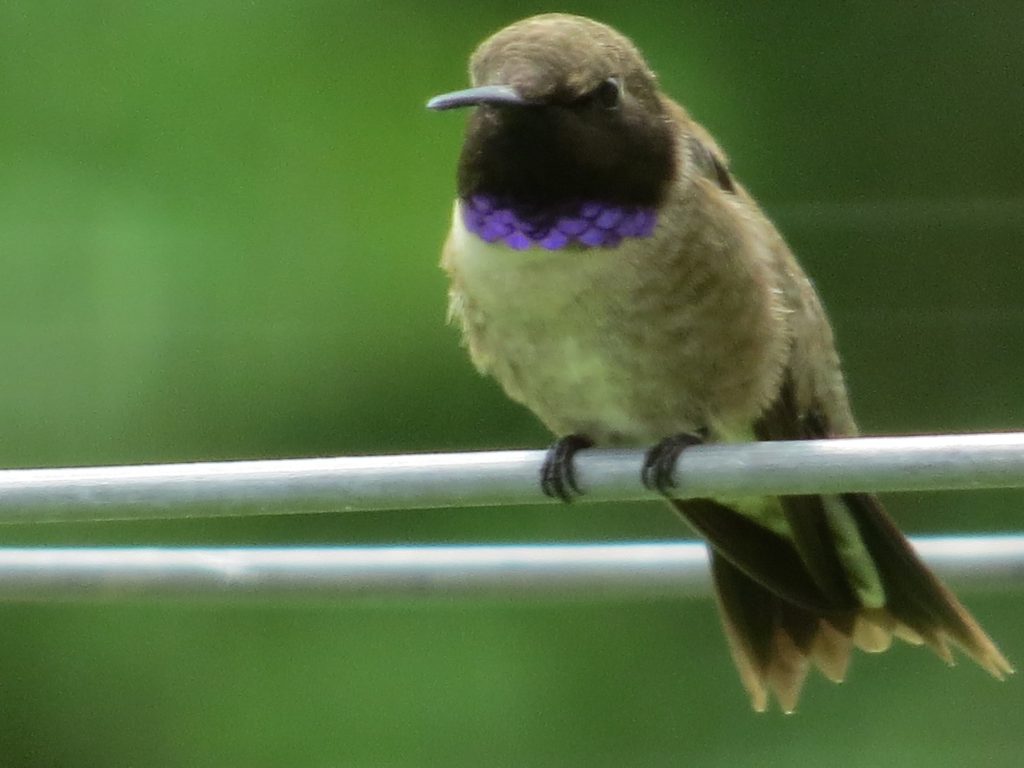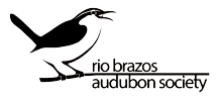
It is hummingbird time in the Brazos Valley again, and the hummers are beginning to migrate through the area, hopefully in decent numbers. Every year I’m asked how I attract hummingbirds to my yard.
Like any bird, hummingbirds need the three components: food, drink and shelter. I have had six species of hummingbirds in my yard and up to 150 birds at one time, but this wasn’t achieved overnight. With some time and planning, you can get these jewels coming to your yard, too.
Food
Clean feeders and native nectar producing plants go a long way to attracting hummingbirds to your yard. A four-to-one mixture of water and sugar is all that is needed for your feeders.
Maintaining a clean feeder is crucial. It reduces disease transmission and keeps the birds coming. You should change the sugar water and clean the feeder every three days when the weather is warm. When the weather is cool (low 70s or lower), you can extend this up to five or six days.
If you see the water turn cloudy, change it right away and clean your feeder. A 10% bleach solution is great for disinfecting, but then the feeder must be thoroughly rinsed and dried before reusing. To save water and sugar, don’t fill the feeder fully unless you have lots of birds.
Tubular plants are another great way to get hummingbirds to your yard. Native coral honeysuckle (and only this species of honeysuckle as the others are too invasive and bloom less) is the earliest bloomer and is good for those early arrivals that might be coming through.
Turks cap is another good plant for attracting hummingbirds. Its red blossoms remain all summer and late into the fall. In the fall it makes little “apples” that cardinals love. Put an edging ring into the ground around the space you want the Turks cap to occupy, otherwise it will continue to expand into other areas of your garden.
Flame Acanthus, autumn sage and annual salvia species are also great plants to put out and will get hummingbirds into your yard. If you live in an apartment, autumn sage and Flame Acanthus both do well in pots on your balcony, and you will have a good chance to attract hummingbirds. Autumn sage is inexpensive and easy to find, whereas Flame Acanthus is harder to find and may require searching in a native plant nursery.
Insect-attracting plants are also good for hummingbirds. Gnats provide the protein that is needed for migration and nesting. If you see hummers flying through clouds of gnats, they are eating them, and this activity is called gnatting.
Drink
Most hummingbirds get their liquids from nectar. If you attach a mister to your garden hose, the birds will use it for cleaning, and they will also drink the drops off the leaves where the mist accumulates. This is a bonus for your yard and will increase the likelihood of attracting a variety of birds, not just hummers, without using much water (turn it off at night).
Shelter
Dense plants of almost any kind are good to have near your feeders. Even tomato plants can provide shelter for hummingbirds.
The birds often use my tomato cages as perches to fly out to the feeder. Possum Haw Holly (similar to a yaupon), mesquite and many other shrubs are invaluable places for hummingbirds to snooze at night and to seek shelter from the elements.
If shelter and hiding places are not provided, birds may come to your feeder, but they are less likely to stay in your yard and will just move on.
Migration
The optimal time to put out feeders in the Brazos Valley is somewhat dependent on the weather, but in general, mid to late March is when hummingbirds start arriving. Migration will peak in April and die out in early May, and only a few nesting hummingbirds stay in the area during the summer.
After migration, you can go down to one feeder if you have had several out. Hummingbirds will return in late August and will continue to move through the area until early October. After this you might get wintering birds, but if you are not able to do the work to keep your feeders in the winter filled, cleaned and open (unfrozen), they should be taken down in mid-October.
Sandy Dillard is the conservation chair for the Rio Brazos Audubon Society.
